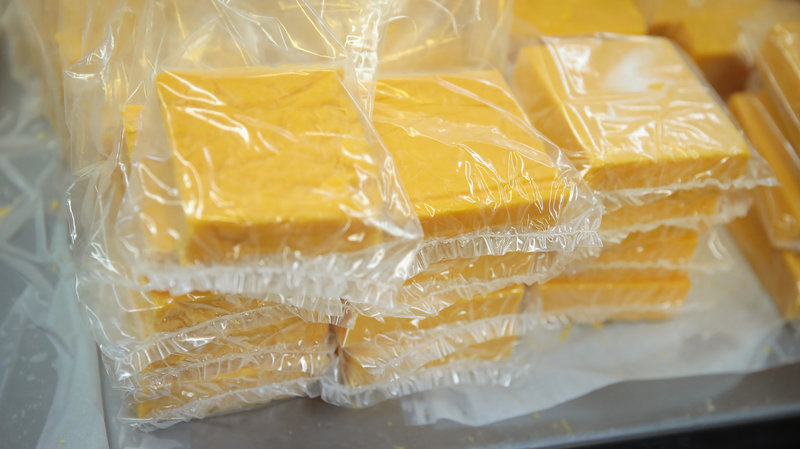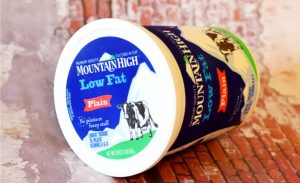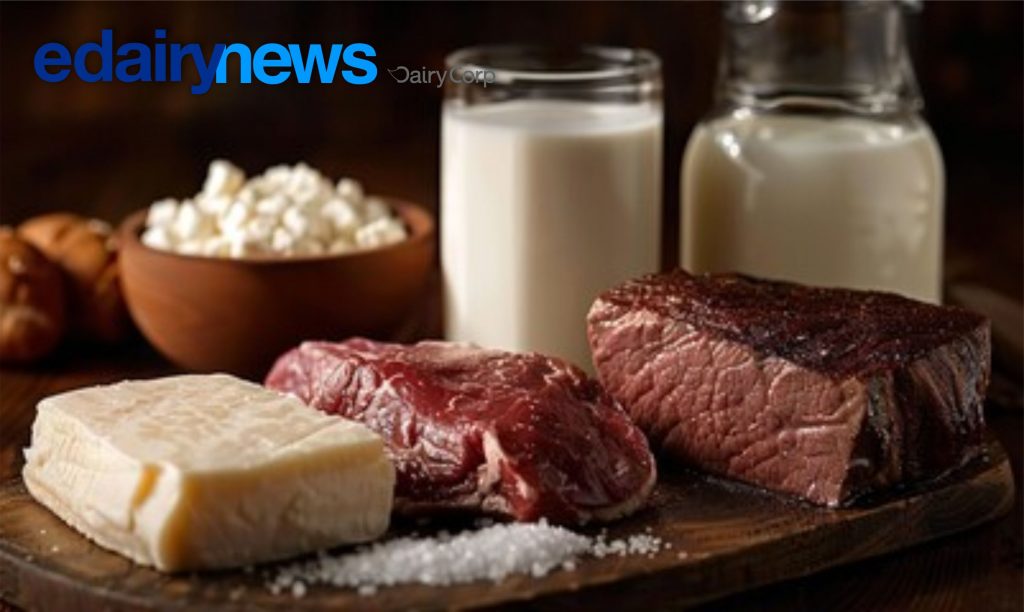But, as the saying goes, what goes up, must come down and down it did, plunging 23 cents Wednesday, the second largest single-day loss ever, and closed Friday at $2.5750, 7.5 cents lower on the week but 71.75 cents above a year ago.
Tuesday’s spread had the barrels at 44 cents below the blocks, exceeding the previous record spread of 43.25 cents on Sept. 23, 2019.
The Cheddar barrels saw their Friday finish at $2.40 per pound, up 11.5 cents on the week, 61 cents above a year ago, but 17.5 cents below the blocks. There were 14 sales of block last week at the CME and 6 of barrel.
The blocks gained 4.5 cents Monday, on 9 loads traded, and added 2 cents Tuesday, with 5 more loads exchanging hands, climbing to $2.64 per pound, as traders awaited the May Dairy Products report on Wednesday and announcement of the June Class III milk price, which is poised to be just pennies below $21 per hundredweight.
The barrels were unchanged Monday and Tuesday, holding at $2.40 for the fourth consecutive session.
StoneX dairy broker Dave Kurzawski, (formerly FC Stone), wrote in his June 30 Early Morning Update: “We’ve continually written that fresh cheese demand remains rather strong all things considered. What you might not know, however, is that you have to go back to the pre-lockdown date of Feb. 4 to find the last time 9 loads of block cheese traded during the spot call. In other words, we’re seeing more cheese come to market now. It took most of June to turn the Cheddar ship around but supply of available fresh cheddar that is managed by way of the CME spot market is growing. We expect this to continue this week.”
Dairy Market News reports that Midwestern cheese producers remain busy with seven-day workweeks. Spot milk offers have increased and prices slipped mid-week and, for the first time in over a month, were below Class. Regional producers report Eastern customers are on a push, even with the surge in prices, but some cheesemakers suggest buyers are hesitant. Block inventories are notably tight, according to DMN, while barrels are a little more available, but tight in relation to a year ago.
Western cheese output is “very active,” says DMN. Some processors are resorting to fortification with powders to make sure they have enough. Cheese plants are being run at full capacity or above recommended capacity. DMN says there is more cheese available to buyers compared to previous weeks but barrel cheese is more prevalent. Sales are strong into retail but remain below pre-coronavirus levels for food service. The Farmers to Families Food Box program’s current intakes of cheese and the fact that it is being extended into July and August are helping fuel the western cheese market, according to DMN.
Cash butter saw its third week of meltdown, closing Friday at $1.7650 per pound, down 8.5 cents on the week and 64.5 cents below a year ago, with 9 sales.
The butter was unchanged both Monday and Tuesday.
Butter makers continue to say bids on cream are too low to entice suppliers. Cream multiples, at least on the low end, were sliding some from the previous week, but cream was headed into heavier ice cream and cheese output.
“With the July 4th approaching, historically cream has become more available,” says DMN, “but some butter makers question how available cream will be and if the lack of recent churning will provide enough time to produce adequate butter stocks for the fall retail demand, particularly as current retail orders are strong. Foodservice orders remain well behind last year, says DMN, “but the supply and demand tug-of-war is currently one-sided on the demand side.”
Western contacts tell of two distinct markets. “On the one hand, retail butter demand has remained strong. Manufacturers say their print churn production times are maxed out. While they would like to begin stocking some of the butter away for fourth quarter demand, butter makers have been unable to do so because of the heavy requests for print butter.”
“On the other hand, bulk butter demand is tepid. While foodservice and ingredient accounts are slowly coming back to life, they are well below typical levels. Multiples are pricing some cream out of economic reach for use in the churn for bulk butter,” DMN says, but bulk butter inventories are heavy.
Grade A nonfat dry milk lost some ground, closing last week at $1.02 per pound, 1.25 cents lower on the week and 3 cents below year ago, with 17 cars sold.
Monday’s powder slipped 0.75 cents and it gave up another 0.75 cents Tuesday, falling to $1.0050 per pound
Dry whey was down as well, with a 31.25 cent per pound close Friday, down 1.5 cents on the week and 2.25 cents below a year ago, with 24 sales reported.
The whey inched up a half-cent Monday and stayed there Tuesday at 31.75 cents per pound.
Culling drops
Rebounding dairy prices likely persuaded dairy farmers to cull fewer cows in May. The latest Livestock Slaughter report showed an estimated 233,300 head were sent to slaughter under federal inspection, down 46,100 head or 16.5% from April and 24,800 or 9.6% below May 2019. A total 1.37 million have been culled in the first five months of 2020, down 41,100 head or 2.9% from 2019.
Fluid report returns
If you think you’re behind in your paper work, consider this. The Agriculture Department just issued its December 2019 fluid milk sales report, likely delayed because of the bankruptcy situation of Dean Foods, in the process of being acquired by Dairy Farmers of America, and Borden, now in the process of being acquired by a private investment firm, Capitol Peak Partners and KKR & Co.
December sales totaled 3.95 billion pounds of packaged fluid sales, down 2.3% from December 2018. Conventional product sales totaled 3.7 billion pounds, down 2.8% from a year ago.
Organic products, at 232 million pounds, were up 5.7% and represented 5.9% of total sales for the month.
Whole milk sales totaled 1.3 billion pounds, up 0.8% from a year ago and sales for the year totaled 15.1 billion pounds, up 1.0% from 2018 and made up 32.7% of total milk sales for the year, up from the 31.8% share in 2018.
Skim milk sales, at 262 million pounds, were down 13.3% from a year ago and were down 10.4% for the year.
Total packaged fluid milk sales, January through December, totaled 46.2 billion pounds, down 1.8% from 2018. Conventional product sales for 2019 totaled 43.7 billion pounds, down 1.9%.
Organic products, at 2.6 billion pounds, were off 0.5% and represented 5.6% of total fluid milk sales for the year.


![o país] tem que ter o seu território protegido, não somente em relação aos seus ecossistemas e meio ambiente, mas também com relação à produção agrícola](https://br.edairynews.com/wp-content/uploads/2024/09/1-120-300x183.jpg)









